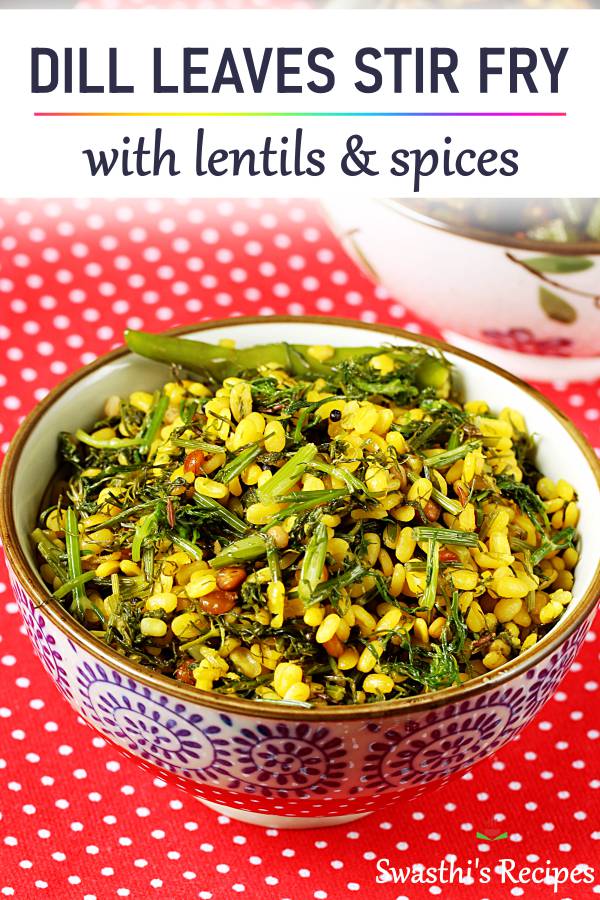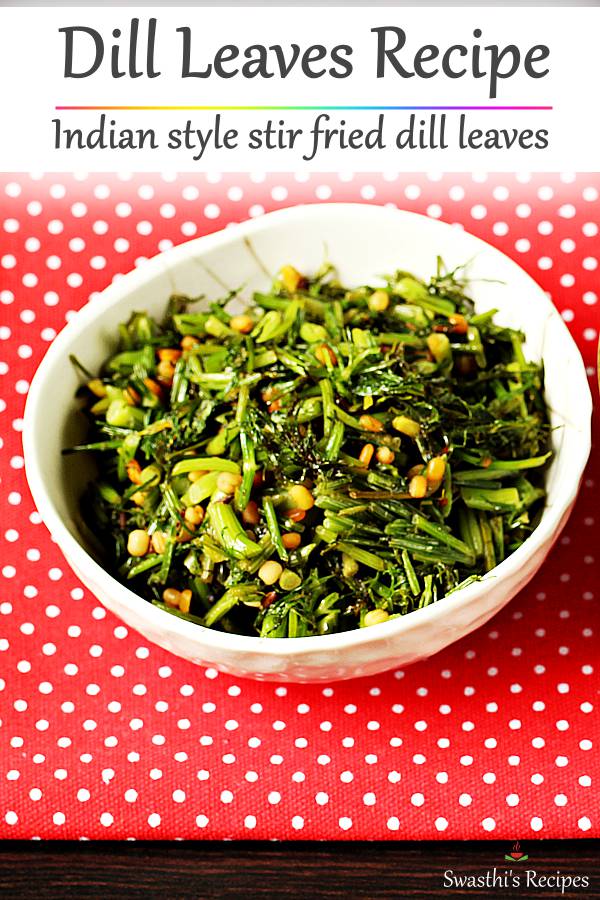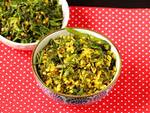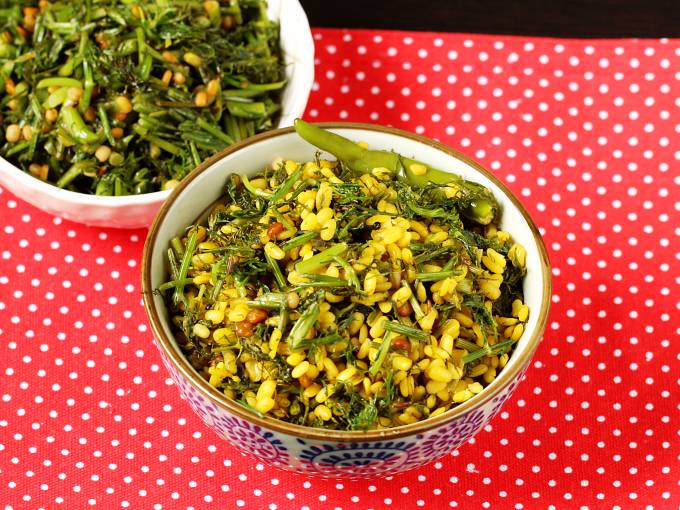From the ancient times dill has been used in many countries due to their medicinal properties. It is believed that “DILL” (leaves, stems & seeds) possess phytochemicals which contribute to the medicinal properties. Anti-flatulent & anti-inflammatory properties are some of them. Dill leaves are said to aid digestion, benefit stomach related problems and arthritis. In India, dill leaves & stems are used mostly to make stir fry dishes, parathas & is also cooked with lentils/dal. Shepu, suva & sabsige are the regional names to this aromatic herb. In this post I have shared a simple dill leaves recipe. Apart from this, sometimes I add a handful of these finely chopped leaves to akki rotti and paratha dough. Sometimes I just add them to stir fried veggies like potato, sweet potato, red pumpkin and carrots. Here are some tips that may help you if you are using them for the first time.
Tips
Dill taste best when they are fresh. So try to cook them at the earliest within 2 to 3 days. Dill leaves have a very strong aroma, so start using in smaller quantities. A best way to start off is to add them to your roti dough or add them to stir fried veggies like potato or carrots.I usually use up the stems along with the leaves to make a stir fry. This goes very well with some plain roti and some veggie salad on the side.
You can skip the lentils completely from the recipe and just stir fry with garlic and chilies. Chana dal and urad dal are added to the tempering as they add a slight crunch and aroma to the dish.
I have used soaked moong dal here. So I have cooked it in the pan directly. You can also precook the dal with 1:1 water in a pressure cooker and then use it here in the recipe.
You may replace moong dal with toor dal or chana dal.
You can follow this aloo methi recipe to make a potato dill stir fry. You can also follow this spinach dal recipe and make dal with dill leaves.
Dill leaves recipe




